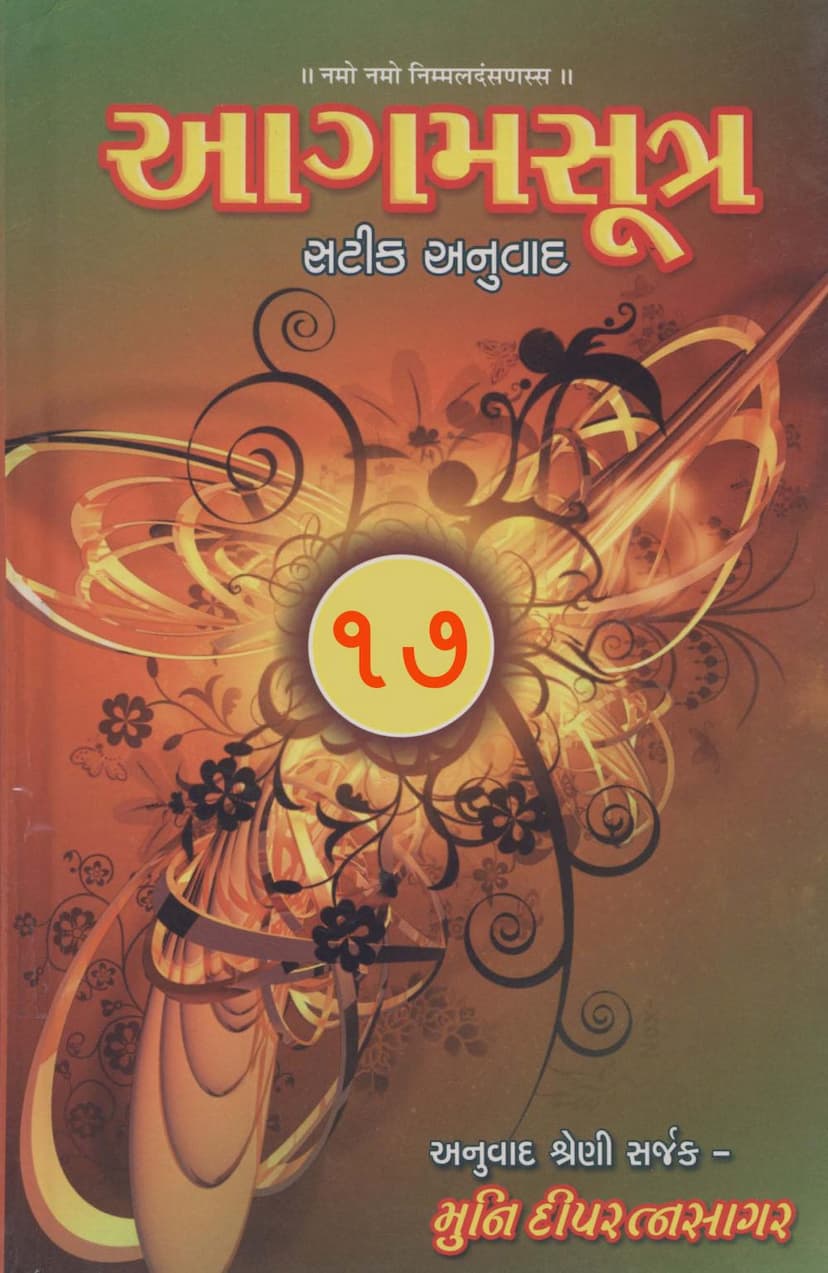Agam 14 Jivajivabhigama Sutra Satik Gujarati Anuvad
Added to library: September 1, 2025

Summary
It appears that you have provided a substantial portion of a Jain text titled "Agam 14 Jivajivabhigama Sutra Satik Gujarati Anuvad," along with a catalog link and a publisher. You've asked for a comprehensive summary in English.
Based on the provided text snippets, which seem to cover extensive details about the classification, characteristics, lifespans, and locations of various beings according to Jain cosmology, particularly focusing on the Jivajivabhigama Sutra, here's a summary of the core themes and content as extracted from the provided Gujarati text:
Book Title: Agam 14 Jivajivabhigama Sutra Satik Gujarati Anuvad (Agam 14: Jivajivabhigama Sutra with Commentary and Gujarati Translation)
Author(s): Dipratnasagar, Deepratnasagar (Likely referring to Muni Dipratnasagar as the translator/creator of the series)
Publisher: Deepratnasagar / Shri Shrut Prakashan Nidhi
Core Content of the Jivajivabhigama Sutra (as indicated by the text):
The Jivajivabhigama Sutra, the 14th Agam (specifically, the 3rd Upanga), is a foundational Jain text that delves deeply into the classification and understanding of Jivas (living beings) and Ajivas (non-living entities). The provided text indicates a systematic and comprehensive exploration of these categories.
Key Themes and Concepts Likely Covered (based on the extracted content):
-
Classification of Souls (Jivas): The text meticulously categorizes Jivas based on their senses (one-sensed, two-sensed, etc., up to five-sensed), the type of body they possess (e.g., audarika, vaikriya, aharaka, taijasa, karmana), their state of existence (e.g., worldly souls vs. liberated souls), their consciousness (sanjni vs. asanjni), their moral predispositions (kashayas like anger, pride, deceit, greed), their lifespans (varying from a moment to countless years), their origins (e.g., originating from hellish beings, Tiryanchas, humans, or heavens), and their spiritual states (e.g., the presence or absence of right faith, knowledge, conduct, and the stages of spiritual progress).
-
Classification of Non-Living Entities (Ajivas): While the title emphasizes Jivas, Jain cosmology classifies Ajivas into five categories:
- Dharma (principle of motion)
- Adharma (principle of rest)
- Akasha (space)
- Kala (time)
- Pudgala (matter) The text likely details the subtle nature and characteristics of these Ajiva categories as well, particularly Pudgala (matter) which manifests in various forms and qualities.
-
Cosmology and Geography: The text seems to describe the Jain universe (Loka), including various realms, continents (Dvipas), oceans (Samudras), and mountains (like Mount Meru). It details the nature, dimensions, and inhabitants of these realms, including the hellish realms (Narakas), the Tiryanchayoni, human realms (Karmabhumi, Akarmabhumi, Antardvipika), and the heavenly realms (Vyantar, Jyotish, Vaimanik). The detailed descriptions of the Naraka realms, their layers, the types of beings residing there, their lifespans, and the nature of their suffering are particularly highlighted in the provided text. Similarly, the descriptions of different types of heavenly beings and their respective realms are extensive.
-
Karma and Rebirth: The underlying principle of Jainism, karma, is implicitly present. The text's detailed classification of beings, their lifespans, and their sensory experiences, along with concepts like 'punya-pap' (merit and demerit), 'yogic activity,' and 'ldeshyas' (subtle colors of the soul's aura), points to the cycle of birth, death, and rebirth, and the influence of karma on these experiences.
-
Spiritual Paths and Liberation: While the primary focus is on classification, the ultimate goal of Jainism is liberation (Moksha). The text likely touches upon the path to liberation by highlighting the nature of souls and the conditions that keep them bound to the cycle of rebirth, thereby indirectly pointing towards the need for right faith, right knowledge, and right conduct.
Specific Details Mentioned in the Text Snippets:
- Commentary and Translation: The title itself indicates that this is a Gujarati translation with commentary, suggesting a deep dive into the original Prakrit and Sanskrit texts of the Agams.
- Comprehensive Nature: The text emphasizes the extensive nature of the publication, with mentions of volumes covering various Agams, compilations of spiritual literature, grammatical works, and ritualistic texts.
- Detailed Classification: The extensive listing of different types of beings within the hellish realms, heavens, Tiryanchayonis, and their specific characteristics (like lifespan, physical attributes, powers, and spiritual states) points to a highly detailed and meticulous approach to classification.
- Emphasis on Nuance: The discussions about the subtle differences in lifespans, the conditions for rebirth, and the various types of beings within each category suggest a deep philosophical and analytical approach to understanding the Jain worldview.
Overall Purpose:
The Agam 14 Jivajivabhigama Sutra, as presented in this translated and commented version, aims to provide a comprehensive and accessible understanding of the fundamental Jain principles of Jiva and Ajiva. It serves as a guide for understanding the intricate details of the Jain cosmos, the nature of existence, and the conditions of all living beings within the vast cycle of samsara. The emphasis is on providing detailed knowledge that can aid in spiritual practice and the understanding of Jain philosophy.
This summary is based on the general themes and specific mentions within the provided text. A truly exhaustive summary would require a complete translation and analysis of the entire text.